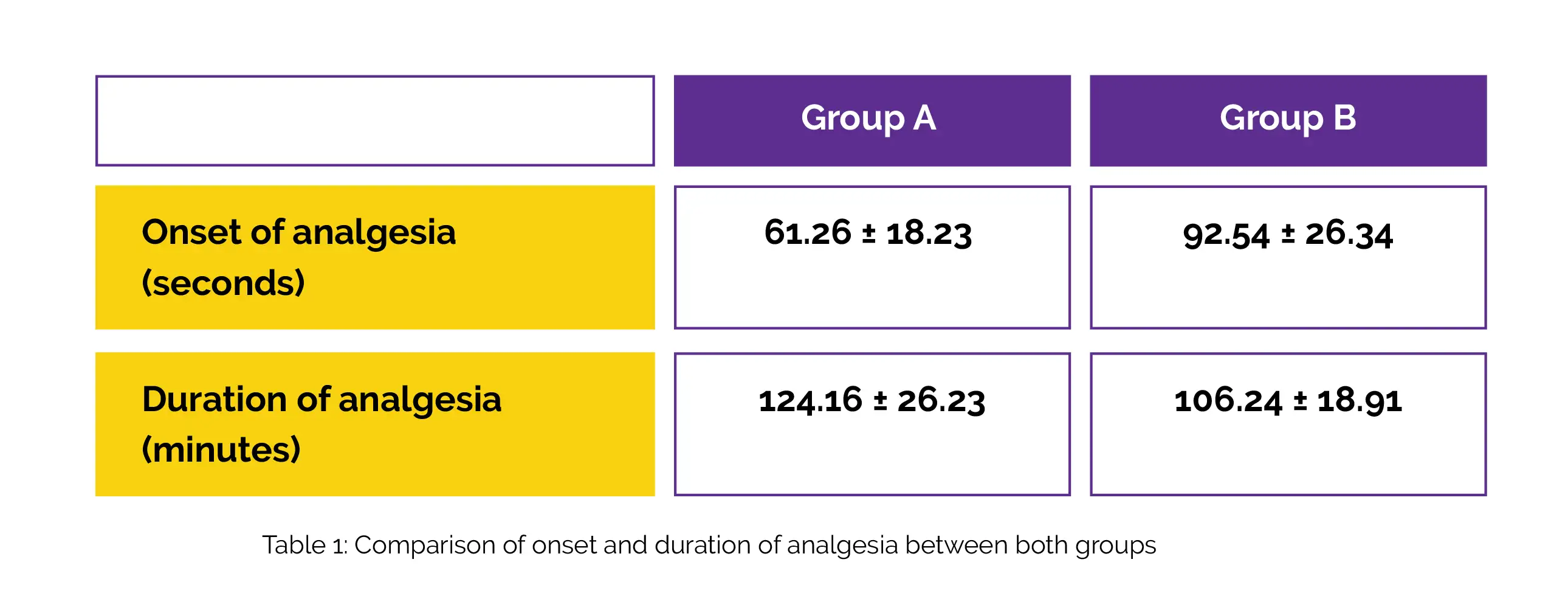Categories
Change Password!
Reset Password!


As intrathecal adjuncts in labor analgesia, Dexmedetomidine and Fentanyl were compared for safety and effectiveness in a prospective randomized controlled trial.
As an intrathecal adjuvant for labor analgesia, Fentanyl should be used over Dexmedetomidine.
As intrathecal adjuncts in labor analgesia, Dexmedetomidine and Fentanyl were compared for safety and effectiveness in a prospective randomized controlled trial.
The study included 120 parturients and segregated them into Group A and Group B. Group A received Bupivacaine 2.5 mg (0.5 mL diluted to 2 mL) + 20 μg of Dexmedetomidine in 1 mL saline intrathecally (total volume: 3 mL) while Group B received Bupivacaine 2.5 mg (0.5 mL diluted to 2 mL) + 15 μg of Fentanyl in 1 mL saline intrathecally (total volume: 3 mL). Primary outcomes included successful analgesia, delivery method, and neonatal outcome. Participants' analgesia onset and duration, level of motor block, and adverse effects on the mother and fetus were all tracked.
A total of 108 expectant mothers (Group A: 57; Group B: 51) reported having enough analgesia, and 74 had vaginal deliveries (Group A: 41; Group B: 44). Normal vaginal delivery rates were greater in Group B. Group A recorded earlier analgesia onset that continued for greater duration compared to Group B, as shown in Table 1:

In none of the groups were there any significant negative effects. Fetal heart rate variability was attenuated, according to ultrasonography. Newborns in Group A were found to have low heart rates.
When used as an adjuvant, intrathecal Fentanyl raised the likelihood of vaginal delivery. With intrathecal Dexmedetomidine, analgesia intensity and duration were improved.
Anesthesia: Essays and Researches
Comparative evaluation of intrathecal Dexmedetomidine and Fentanyl as an adjuvant for combined spinal–epidural analgesia for labor
Anshul Jain et al.
Comments (0)